Ertach Kernow - Warleggan once isolated and insular
The name Warleggan is probably better known to millions of people as characters from the Poldark television series, but perhaps those living in the Bodmin area will no doubt recognise it as a small parish lying on the edge of Bodmin Moor. Until the existing road linking it to the A38 was built in 1953, just 70 years, ago this was one of the most remote regions of Cornwall. Nikolaus Pevsner the art and architectural historian, author of the original Buildings of England series of books, described Warleggan as the ‘loneliest village on Bodmin Moor’ and Sir John Betjeman as ‘a place of remote slate and granite farms’. Very little has been written about it and it remains relatively unknown and unvisited.
Although this is a historic place first mentioned as Worlegiane in 1245 there is no record of a church at that time, despite John Wak being named as Rector. Readers might question why the term rector is used rather than a vicar. Rector these days is a rather historic term relating to whether the parish in question had glebe lands from which an income could be raised and has no bearing on church hierarchy. Records show that Warleggan had some 22 acres of land in 1931 and this provided partially for a living for the incumbent.
Warleggan is a small narrow parish, squashed between the more substantial parishes of Cardinham and St Neots, with the almost insignificant parish of Temple at the northern end. A small tributary of the River Fowey, the River Warleggan, runs through it and forms part of its eastern boundary. Primarily the area is an agricultural community although there were some mining interests up until 1945. The population is small, only 259 in the last census growing from the first 1801 census when it was just 116 people. Within this parish there is the village of Warleggan and the smaller hamlet of Mount, just a short distance away.
It always seems a wonder so many churches were built throughout Cornwall to service relatively small numbers of parishioners. During the centuries when many of Cornwall’s medieval and late medieval churches were being constructed there was no competition from other denominations. Following the Reformation some continued to follow the catholic branch of Christianity as opposed to the new Anglican state religion. Until the eighteenth century there was limited non-conformist interests until, certainly as far as Cornwall was concerned, the dramatic rise of Methodism. Within the parish of Warleggan two Methodist chapels were established, so for rectors of St Bartholomew’s Church competition for the small number of residents would have proved quite challenging.
There has been a church at Warleggan for some 800 years since construction during the 13th century. The south wall of the church was taken down early in the 15th century when a south aisle of five bays was built. It was suggested by Edmund H Sedding, the 19th century architect and writer, that this was perhaps in two separate periods due to use of two distinct stone types. The Bishop of Exeter Edmund Lacy’s register between 1420 and 1455 notes the parish of Warleggan on several occasions, including vacancies for the position of rector, obviously not a popular benefice. The low tower was constructed towards the end of the fourteenth century and originally had a spire. This was removed after being damaged by lightening during the early 19th century. The early doorway on the north was blocked up and the porch to the south side constructed during the 15th century. Like many churches throughout Cornwall there is a fine plasterwork Royal Arms dated 1664, acknowledging Cornish support for the Royalist cause in the English Civil War. An ancient medieval wheel-headed wayside cross stands in the churchyard, which was moved to the church in 1858 from Carburrow, where it had become used as a gate post. It’s thought to have originally marked the church path from Temple to Warleggan.
Although Warleggan is not well-known for mining Treveddoe Mine also known as Old Wheal Whisper was a huge openwork quarry, worked for tin and copper ores from the early 18th century until about 1917. Later reopened it was worked until 1945 with just the quarry and some small building ruins remaining as evidence, these are now overgrown by woodland trees and plants. Cabilla Manor Wood, which has the River Warleggan running through it to the west of the parish, this woodland extending into the neighbouring parish of Cardinham. This is designated a Site of Special Scientific Interest (SSSI) and contains an area designated ancient woodland. Because of the age of this woodland there is a diverse range of plants, animals and birds living there, being recorded in 2020 by members of the Cornwall Ancient Tree Forum.
Perhaps one of the other things that brings Warleggan to mind is the story about the Reverend Frederick Densham the last Rector of Warleggan. It was in 1931 that the Rev. Densham came to Warleggan where its villagers generally held very conservative and insular Cornish attitudes. This probably through Warleggan’s isolation and lack of regular worldly contact with larger communities. Considering the inhabitants listed in the Kelly’s Directory of 1939 most of these folk and their families were farmers or connected to the farming community. The remainder are trades people, three shopkeepers, only three further private residents and the Rector himself. The lord of the manor was Lord Vivian, non-resident at Warleggan. The total population was in the 1931 census given as 168 persons.
The story of Frederick Denisham claims he was abandoned by his congregation and said to have preached to cut outs of them, this is untrue, but he did put down place names on the pews. He may not have agreed with his local Parochial Church Council on the type of service he preferred, perhaps referred to as low church rather than his predecessors preference for high church services. His strong sympathies for Methodism meant that he had on occasion preached at local Methodist chapels, to which he was maybe better suited, being liked and appreciated by local Methodist worshipers. Local person Mrs Barbara Keast said, as reported in the Sunday Independent in 1991, ‘the Rev Densham was a very good man, and the reports of him being evil which circulated at one time are absolute rubbish. Whenever he heard there was a sick person anywhere in the area, he would take them flowers from his own garden, and say payers at their bedside for a quick recovery’. She continued ‘He was wonderful to all the local people whether they were Church or Chapel.’ He wanted to replace the organ with a piano or similar more suitable for children’s services and he was vehemently opposed to gambling of any type including whist drives and raffles. In a farming community it really didn’t go down well when he became a vegetarian, in that alone he was well ahead of his time. Some of his other forward-thinking, maybe strange ideas, were ones many church attending residents of Warleggan couldn’t understand or appreciate. The church pigeon and rook shoot was abandoned, and he kept dogs much to the annoyance of local farmers. He had created a children’s playground at the rectory and painted much of the church in bright colours. The conditions of his tenure were he recorded the details of his services, which he did meticulously. Although his parishioners avoided his services as he put it, ‘They all come to me in the end. I conduct all their funerals. They won’t come to church in their feet, but they come in their black carriages.’
Unsupported by the community he tried to serve in his own way his final wishes were ignored and his own burial or rather scattering of his ashes was not where he intended, carried out by just his solicitor. However, he at least is remembered far more than any of other incumbents of St Bartholomew’s, albeit not kindly or accurately. Sadly, often writers and people wanting to sell a story spice up and embellish the truth, and this was certainly the case relating to the Rev Densham. Daphne du Maurier was certainly guilty of exaggeration but this and the two films starring Sir John Gielgud as Rev Densham in the 1973 film ‘Deliver Us from Evil’ and the later 2009 film 'A Congregation of Ghosts' starring Edward Woodward in the lead role has brought a degree of fame to Warleggan. Of the later film Jane Nancarrow, from Launceston, who played the part of Mary Tredinnick wife of churchwarden Henry Tredinnick said of Edward Woodward ‘His portrayal of this man who was pretty much misunderstood was amazing.’ Looking at the positive aspect the worldwide publicity has aided church restoration work with the Cornwall Historic Churches Trust providing a grant and this together with a legacy saw the nave reroofed in 2008 and further grants the restoration of the tower in 2018. Perhaps now the work of restoration should be concentrated on the reputation of Rev Densham, who although perhaps somewhat eccentric was far better than portrayed. He was considered by many to have been a kindly man but misunderstood by an insular and backward-looking Cornish church community.
Today despite its small population there seems to be a good community spirit and their monthly newsletter distributed throughout the parish includes plenty of information about events and activities.
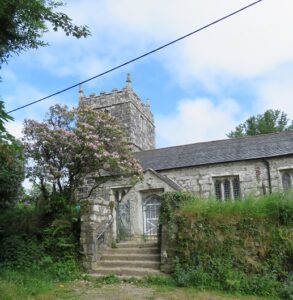
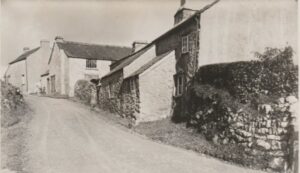
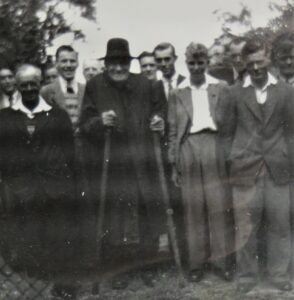
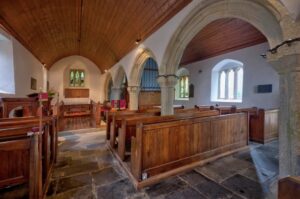
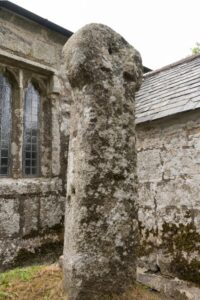
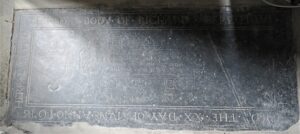
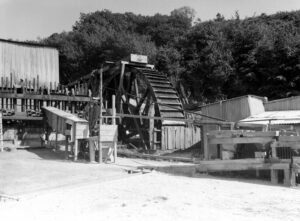
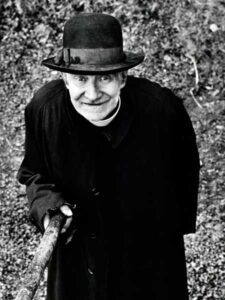
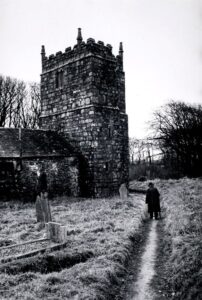
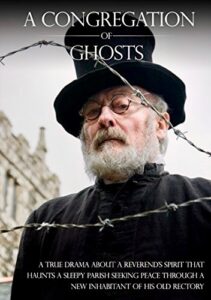
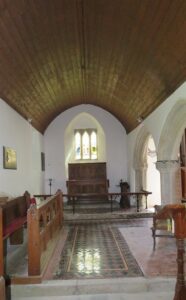
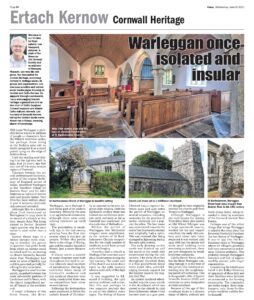
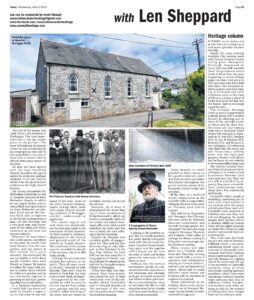
![[156] Ertach Kernow Heritage Column - 25th June 2023 - Tansys Golowan Ertach Kernow Heritage Column - 25th June 2023 - Tansys Golowan](https://www.cornwallheritage.com/wp-content/uploads/2023/06/156-Ertach-Kernow-Heritage-Column-25th-June-2023-Tansys-Golowan-288x300.jpg)